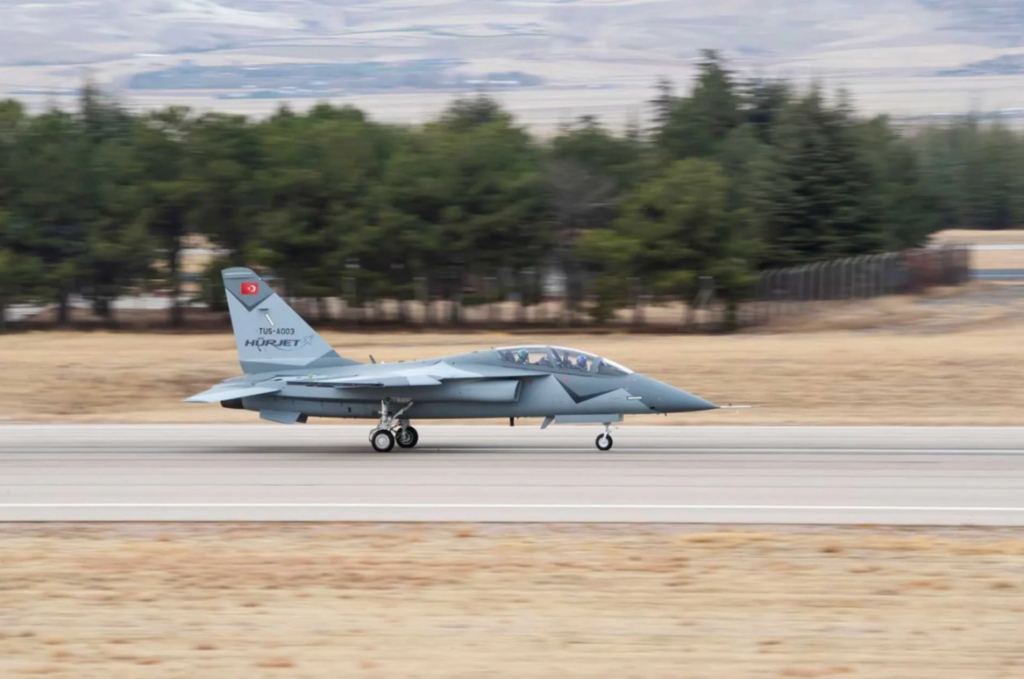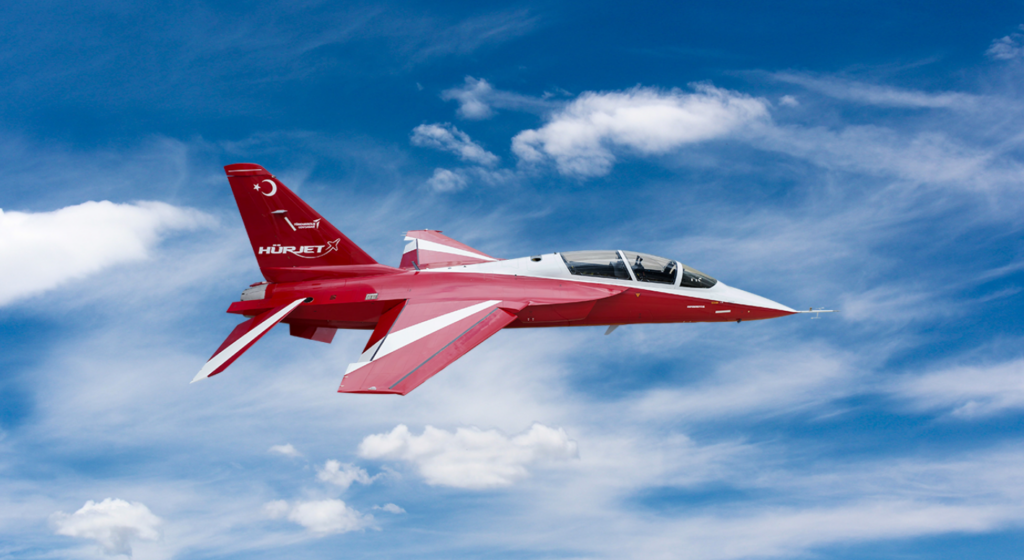Spain Signs Deal for 45 TAI Hürjet Supersonic Jet Trainers to Replace F-5 Fleet
Spain’s Council of Ministers had approved a significant defense modernization plan that includes buying up to 45 Turkish-made TAI Hürjet advanced jet trainers to replace its aging Northrop F-5M fleet. The €3.68 billion package will allocate approximately €1.04 billion in loans to Airbus Spain to develop the Hürjet program. Under the plan, the new jets will be built by Turkish Aerospace Industries (TAI) and delivered to Spain starting in 2028, with a fully Spanish-configured version entering service around 2031. This makes Spain the first foreign operator of the Hürjet and a crucial component of the “Integrated Advanced Flight–Combat Training System” (ITS-C) to be located at Talavera la Real Air Base in Badajoz.

The Hürjet is a tandem two-seat supersonic jet trainer developed by TAI. It is powered by one General Electric F404-GE-102 turbofan and is designed for advanced jet training and light combat roles. It can cruise at Mach 1.2 altitude and achieve a top speed of about Mach 1.4. Its digital glass cockpit, full fly-by-wire controls and +8/–3 g airframe give it high maneuverability and allow pilots to train for high-performance combat aircraft while reducing live flight hours.
The Hürjet carries a substantial weapons load on seven external hardpoints – roughly 3,000–3,400 kg of ordnance. Spanish trainers will be equipped for both training and light-attack missions, potentially using NATO-compatible munitions. An in-flight refueling probe, helmet-mounted display and embedded simulation suite are among the Hürjet’s features, enabling Spanish pilots to practice complex scenarios in a networked environment. Ground-based simulators integrated with the Hürjet jets will form the heart of Spain’s new pilot training system, improving cost-effectiveness and readiness.
Under the Spain–Türkiye agreement, initial Hürjet airframes will be assembled at TAI’s Turkish factories, then ferried to Airbus Defence and Space facilities in Spain for final outfitting. Airbus Spain will install national avionics, mission systems and any local modifications in an “españolizada” configuration, with Spanish firms contributing key components. Deliveries are scheduled to commence in 2028, with the first batch intended for training courses in 2029/30. The fully Spanish-standard jets are expected to arrive by 2031. All Hürjet operations and simulators will be concentrated at Talavera la Real AB, home of Spain’s Fighter and Attack School.
The deal has important geopolitical and economic implications. Spain’s choice of a Turkish system over Western competitors signals increased trust and interoperability with Türkiye’s growing aerospace sector. The sale is a milestone for Türkiye as it is the first Hürjet export to an EU/NATO member. This may open doors for further cooperation and make the Hürjet more attractive to other countries replacing Cold War-era trainers. Madrid can maintain the Hürjet fleet under EU arms-export controls as the agreement also includes comprehensive support and life-cycle packages. The approval to buy up to 45 Hürjets is a crucial move towards modernizing Spain’s air force and strengthening defense relations with Türkiye.

